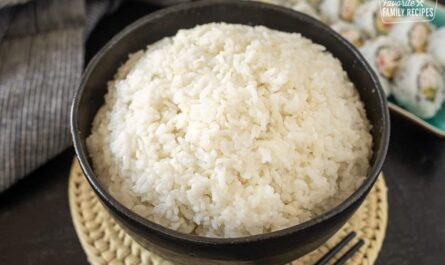When it comes to preparing the perfect rice, the differences between sushi rice vs jasmine cooking time are crucial, especially for a sushi lover. Understanding these differences can elevate your culinary skills and enhance your dining experience. Whether you’re a seasoned chef or a home cook, knowing how to cook these two popular types of rice can make all the difference.

Introduction to Sushi Rice and Jasmine Rice
Sushi rice is a short-grain rice that is essential for making sushi. It’s sticky and has a distinct flavor due to the seasoning of rice vinegar, sugar, and salt. On the other hand, jasmine rice is a long-grain rice known for its aromatic fragrance and fluffy texture. It’s commonly used in Thai and other Southeast Asian cuisines.
Why Cooking Time Matters
The cooking time of rice affects its texture and taste, which is why it’s important to understand the cooking time for both sushi rice and jasmine rice. Cooking time can impact the overall dish, especially when rice is a central component.
Cooking Time for Sushi Rice
To achieve the ideal sticky texture for sushi, sushi rice generally requires about 18 minutes of cooking time and an additional 10 minutes of steaming off the heat. This method ensures that the rice remains moist and sticky, perfect for rolling sushi.
Cooking Time for Jasmine Rice
Jasmine rice, being a long-grain rice, requires a shorter cooking time of about 12-15 minutes. The goal is to achieve a light and fluffy texture that complements the aromatic flavor.
Key Differences in Cooking Techniques
While both types of rice require washing before cooking, the techniques differ significantly. Sushi rice benefits from being seasoned after cooking, whereas jasmine rice is typically served plain.
Water Ratio for Sushi Rice
The water-to-rice ratio for sushi rice is usually 1:1.1, which helps achieve the sticky texture needed for sushi rolls. This precise ratio is critical for the right consistency.
Water Ratio for Jasmine Rice
For jasmine rice, a 1:1.5 water-to-rice ratio is ideal. This allows the rice to cook evenly and become fluffy, enhancing its aromatic qualities.
Flavor Profiles
The flavor profiles of these two rice types are as distinct as their textures. The seasoning in sushi rice gives it a tangy, sweet, and savory taste, whereas jasmine rice has a naturally sweet and floral aroma.
Applications in Cuisine
Understanding the appropriate use of each rice type can enhance your culinary creations. Sushi rice is perfect for sushi, rice balls, and other Japanese dishes. Meanwhile, jasmine rice pairs well with curries, stir-fries, and grilled meats.
Health Considerations
Both sushi rice and jasmine rice offer nutritional benefits. They are gluten-free and provide essential nutrients. However, sushi rice usually contains added sugar and salt, so it’s worth considering if you’re watching your intake.
Expert Tips for Perfectly Cooked Rice
For the best results, rinse both types of rice thoroughly before cooking to remove excess starch. Use a rice cooker for consistent results, and let the rice sit covered after cooking to finish steaming.
Common Mistakes to Avoid
Avoid using the wrong water ratio or overcooking, which can result in mushy or overly dry rice. Following the specific instructions for each rice type can prevent these common pitfalls.
Tools for Cooking Rice
Using a reliable rice cooker can simplify the cooking process and ensure perfect results every time. For sushi rice, a wooden paddle can help distribute seasoning evenly without crushing the grains.
Additional Resources
For more detailed information on rice types and their cooking methods, visit this guide on rice varieties. Additionally, explore our articles on the proper use of a sushi rice thermometer and differences between sushi rice and medium grain rice for further insights.
Conclusion
In conclusion, understanding the differences in cooking time and techniques for sushi rice vs jasmine rice can significantly impact your dish’s outcome. By mastering these skills, you can create delicious meals that highlight the unique qualities of each rice type, enhancing your culinary repertoire.

FAQ
What is the main difference in cooking techniques?
The main difference lies in the water ratio and cooking time. Sushi rice requires a precise water ratio for a sticky texture, while jasmine rice uses more water for a fluffy finish.
Can I substitute jasmine rice for sushi rice?
While you can substitute in certain dishes, the texture and flavor will differ significantly. It’s best to use each rice for its intended purpose.
Is it necessary to rinse the rice before cooking?
Yes, rinsing removes excess starch, which can affect the texture. It’s an important step for both sushi rice and jasmine rice.
This article contains affiliate links. We may earn a commission at no extra cost to you.



